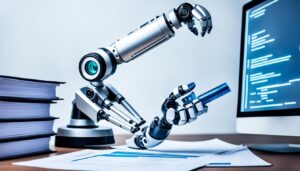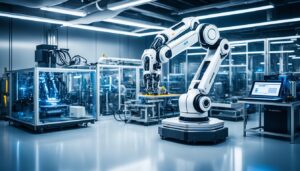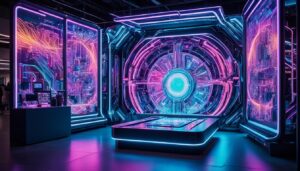
The construction world is on the edge of big changes because of Artificial Intelligence (AI). For architects or designers, using AI might seem hard, but it offers new ways to work together and innovate in building. By using AI, we can mix human creativity and the power of machines.
AI lets architects try out new ideas and go beyond usual creative limits. With AI’s help in analyzing and simulating, architects can focus more on creating and exploring ideas.
Using AI makes building more efficient and optimized. AI can look at a lot of data and give insights to make designs better. This includes using materials wisely, making structures strong, and saving energy. With AI, architects can make projects that are good for the planet and don’t cost too much.
Some people worry that AI might take jobs or hurt creativity in building. But, working together with AI is the best way. This teamwork can change architecture for the better. We can use both human ideas and AI’s speed and power.
Key Takeaways:
- AI in building offers new ways for architects to be creative.
- Adding AI to building makes the work more efficient and better.
- Working with AI is important for the future of architecture.
- AI helps in making designs and finding smart, cheap ways to build.
- By using AI, architects can use the best of human ideas and machine power.
Challenges and Opportunities Faced by Architects in the AI Movement
Architects are at the heart of the growing AI scene in building design. This change brings both great chances to work together and big challenges.
The fear of losing jobs to machines is a big worry. AI is getting better fast, making some think it will take over architect tasks. Yet, we should see AI as a helper that makes us even better and boosts our creative side.
“AI can complement the creative process by handling complex calculations and simulations, allowing architects to focus more on conceptualization and design exploration.”
Keeping creativity alive is another hurdle. Designing buildings is personal and full of art. It’s worrisome to think that AI might not capture that human spark. But we think using AI in our work can actually spark more innovation.
We also worry if AI can be trusted in design. Architects have to make sure AI’s advice is solid and ethical. This means checking the AI’s data and how it works, to keep designs on the right track.
But the chance to work with AI is exciting. It can make designs smarter, saving money and the environment. Architects can use AI to try out many designs quickly, finding the best ones. This teamwork of humans and AI can lead to amazing things in building design.
AI can also change how we pick materials and build. It can sift through lots of data to find new ways to build. This helps architects choose the best materials, make buildings safer, and more.
Opportunities for Collaboration with AI:
- Enhanced design exploration
- Improved efficiency and optimization
- Innovation in material and construction techniques
Stepping into AI puts architects ahead in making buildings better and greener. By diving into AI, architects can face the challenges, grab the chances, and help lead a future where our creativity and AI work together smoothly.

The Role of AI in Project Management and Construction Execution
AI significantly impacts project management and construction by using predictive analytics. It also enables adapting in real-time and boosts agile methods. By looking at past data, AI can foresee risks and problems before they grow. This lets solution architects adjust plans and use resources well ahead of time.
This foresight helps avoid delays and extra costs, leading to successful projects. AI’s ability to process data in real-time makes agile methodologies more flexible. It keeps analyzing data as it comes, helping teams make smart decisions quickly.
Adapting plans on the go is helpful not just in agile settings but also in traditional ones like Waterfall. Here, AI’s insights can help during the planning stages. Studies show AI improves scheduling and distributing resources in construction. This makes operations smoother and more efficient.
By handling repetitive tasks and giving data-backed suggestions, AI helps solution architects build better strategies. It boosts teamwork and sparks new ideas in projects.
Using AI in project management is still somewhat new. This gives solution architects a great chance to use its benefits. By incorporating AI, they can work more efficiently and creatively. This improves their projects and sets new benchmarks in the industry.
FAQ
What is the role of AI in modern building techniques?
What are the challenges faced by architects in the AI movement?
What are the opportunities for collaboration with AI in building design?
What is the role of AI in project management and construction execution?
How can AI benefit project management in the construction industry?
Are there any case studies that demonstrate the effectiveness of AI in project scheduling and resource allocation?
How can solution architects leverage AI in project management?
Source Links
- https://constructible.trimble.com/construction-industry/the-benefits-of-ai-in-construction
- https://www.linkedin.com/pulse/deconstructing-construction-building-tomorrow-ai-ian-j-chbpe
- https://www.linkedin.com/pulse/designing-tomorrow-ais-transformative-role-solution-lee-nevala-w1dzc






